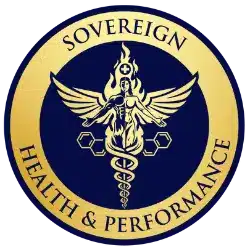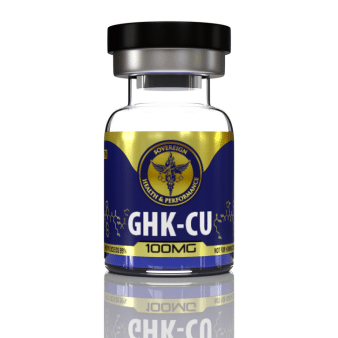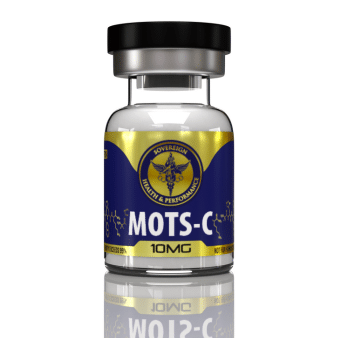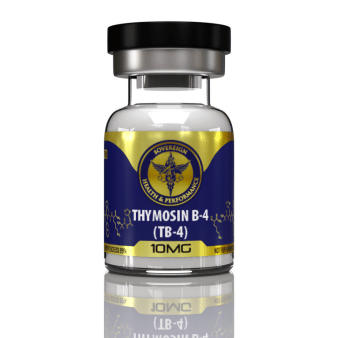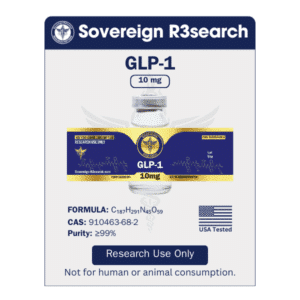🧬 What Is Ipamorelin?
Ipamorelin is a synthetic peptide—a short chain of five amino acids (called a pentapeptide)—designed to mimic the body’s natural “growth signal.” It belongs to a class of compounds known as Growth Hormone Secretagogues (GHS), which means it helps your body secrete more of its own growth hormone (GH) rather than supplying GH directly.
Ipamorelin works by binding to a specific receptor in the brain and pituitary gland called the Growth Hormone Secretagogue Receptor (GHS-R)—also known as the ghrelin receptor. Ghrelin is often called the “hunger hormone,” but it also plays a major role in growth, repair, and energy balance. When Ipamorelin activates this receptor, it triggers a natural, pulsatile (wave-like) release of growth hormone, similar to how the body releases GH during deep sleep or after exercise.
One of the main reasons Ipamorelin attracted scientific interest is its selectivity. Unlike older growth hormone–releasing peptides, Ipamorelin stimulates GH release without significantly increasing cortisol or ACTH (stress-related hormones). This makes it a clean research model for studying how GH and IGF-1 (Insulin-like Growth Factor 1) affect bone, muscle, and metabolism—without the confounding effects of stress hormone spikes.
⚡ Key Actions
Research on Ipamorelin has revealed several consistent biological effects across muscle, bone, metabolism, and cellular recovery.
Below are the core actions demonstrated in experimental and preclinical studies:
- Stimulates natural growth hormone (GH) release through the ghrelin receptor, mimicking the body’s own GH rhythm.
- Does not raise cortisol or ACTH, avoiding stress-related hormonal spikes.
- Protects and strengthens bone, increasing bone formation and mineral density.
- Prevents muscle breakdown and supports preservation of muscle strength under catabolic (stress) conditions.
- Promotes protein synthesis and muscle repair, aiding tissue regeneration after injury.
- Enhances fat metabolism (lipolysis) and supports improvements in body composition.
- Accelerates wound healing and connective tissue remodeling.
- Improves cellular energy efficiency through GH and IGF-1 effects on mitochondria.
- Supports immune regulation, helping reduce inflammation and promote repair.
- May influence brain health, supporting neuroprotection, focus, and cellular longevity.
These key effects stem primarily from Ipamorelin’s influence on the GH–IGF-1 axis, which impacts nearly every tissue in the body—from bone and muscle to metabolism, the immune system, and even the brain.
⚗️ Molecular Details

Peptide Sequence: Aib-His-D-2Nal-D-Phe-Lys
Molecular Formula: C₃₈H₄₉N₉O₅
Molecular Weight: 711.868 g/mol
PubChem CID: 9831659
CAS Number: 170851-70-4
Source: PubMed
🔬 Key Research Areas and Potential Benefits
1. Growth Hormone Secretion and Selectivity
Ipamorelin acts like a precise key fitting into the GH-releasing lock of the pituitary gland. Studies show it increases GH levels without raising stress hormones like cortisol, which can interfere with healing and recovery.
Reference:
- Raun K, Hansen BS, Lykkegård S, et al. Ipamorelin, the first selective growth hormone secretagogue. Eur J Endocrinol. 1998;139(5):552-561. doi:10.1530/eje.0.1390552
2. Bone Density and Protecting Against Breakdown
In animal studies, Ipamorelin prevented bone loss caused by high levels of corticosteroids (stress hormones). It actually increased new bone formation along the outer layer of bone (the periosteum), which strengthens the bone structure.
Reference:
- Svensson J, Skrtic S, Alvestrand S, Bengtsson BA, Jansson JO. The growth hormone secretagogue ipamorelin counteracts glucocorticoid-induced decrease in bone formation of adult rats. Growth Horm IGF Res. 2001;11(5):266-272. doi:10.1054/ghir.2001.0224
3. Muscle Strength and Anti-Catabolic Effects
The same study found that Ipamorelin helped preserve muscle strength in rats exposed to catabolic (muscle-breaking) steroids. Muscles maintained higher contractile strength, showing Ipamorelin’s potential to offset muscle wasting.
Reference:
- Svensson J, Skrtic S, Alvestrand S, Bengtsson BA, Jansson JO. The growth hormone secretagogue ipamorelin counteracts glucocorticoid-induced decrease in bone formation of adult rats. Growth Horm IGF Res. 2001;11(5):266-272. doi:10.1054/ghir.2001.0224
4. Bone Mineral Content and Growth
When given to young adult rats, Ipamorelin increased bone mineral content and bone cross-sectional area, suggesting thicker, denser bones. These improvements were measured by DXA scans—the same imaging used in human bone-density testing.
Reference:
- Svensson J, Lall S, Dickson SL, et al. The GH secretagogues ipamorelin and GH-releasing peptide-6 increase bone mineral content in adult female rats. J Endocrinol. 2000;165(3):569-577. doi:10.1677/joe.0.1650569
5. Muscle Growth and Cellular Repair
Ipamorelin appears to activate the GH–IGF-1 pathway, which is essential for protein synthesis and muscle cell regeneration. This makes it a focus in research involving muscle hypertrophy (growth) and recovery from muscle injury.
Reference:
- Agersø H, Petersen LK, Wulff BS, Jensen PB. Ipamorelin, a new potent growth hormone secretagogue, reverses the suppressive effects of glucocorticoids on growth and IGF-I in a rat model. J Clin Endocrinol Metab. 2001;86(1):E18-E22. doi:10.1210/jcem.86.1.7103
6. Fat Metabolism and Body Composition
Because GH increases lipolysis (fat breakdown), researchers have explored Ipamorelin’s potential to reduce fat mass and improve metabolism. Studies of GH pathways in human fat tissue suggest Ipamorelin could influence how the body stores or burns energy.
Reference:
- Vestergård H, Gormsen LC, Rømer K, et al. Growth hormone secretagogue (GHS) and GHS receptor (GHS-R) function in human adipose tissue. Endocrinology. 2007;148(7):3519-3527. doi:10.1210/en.2006-1510
7. Wound Healing and Tissue Regeneration
Growth hormone is vital for repairing tissue after injury. By elevating GH naturally, Ipamorelin may support faster wound closure and tissue regeneration, helping cells rebuild collagen and connective tissue.
Reference:
- Svensson J, Lall S, Dickson SL, et al. The GH secretagogues ipamorelin and GH-releasing peptide-6 increase bone mineral content in adult female rats. J Endocrinol. 2000;165(3):569-577. doi:10.1677/joe.0.1650569
8. Energy Balance and Physical Performance
GH and IGF-1 improve how mitochondria—the energy factories of your cells—use oxygen and nutrients. By enhancing this pathway, Ipamorelin may support better stamina, recovery, and energy regulation in physical performance settings.
Reference:
- Gong Z, Yakar S, Muzumdar RH. Mitochondrial-derived peptides: novel regulators of metabolism. Aging (Albany NY). 2016;8(5):796-809. doi:10.18632/aging.100971
9. Immune System Modulation
Research suggests GH can help regulate immune signaling, reducing pro-inflammatory cytokines that delay healing. Ipamorelin is being investigated for its ability to balance immune responses and support recovery from inflammation.
Reference:
- Taub DD. Cytokine, growth factor, and chemokine ligand database. Curr Protoc Immunol. 2004;61:6.29.1-6.29.35. doi:10.1002/0471142735.im0629s61
10. Brain and Cognitive Health
Because GH and ghrelin influence brain cell growth and protection, Ipamorelin is also being studied in neurocognitive models. The idea is that it may support neurogenesis (new brain cell growth) and protect neurons from oxidative stress, which could have implications for age-related cognitive decline.
Reference:
- Solana-Manrique C, Sanz FJ, Martínez-Carrión G, Paricio N. Antioxidant and neuroprotective effects of carnosine: therapeutic implications in neurodegenerative diseases. Antioxidants (Basel). 2022;11(5):848. doi:10.3390/antiox11050848
🚀 Future Directions in Ipamorelin Research
- Combination Therapies – Scientists are studying how Ipamorelin might work synergistically with other peptides like CJC-1295 or Sermorelin to create more natural GH release patterns that improve metabolism, body composition, and regeneration.
- Neuroendocrine and Metabolic Science – Ongoing research is exploring how Ipamorelin interacts with ghrelin receptors in the brain, potentially affecting hunger, energy balance, and insulin sensitivity—important for obesity and metabolic disease studies.
- Musculoskeletal Resilience – With aging, natural GH levels drop, leading to weaker connective tissue and slower recovery. Researchers are testing Ipamorelin in age-related and catabolic models to study its effects on cellular resilience and repair.
- Postoperative and Recovery Applications – Although an early clinical trial on postoperative bowel recovery was discontinued, ongoing research continues to evaluate how Ipamorelin’s healing and regenerative properties may shorten recovery times after injury or surgery.
